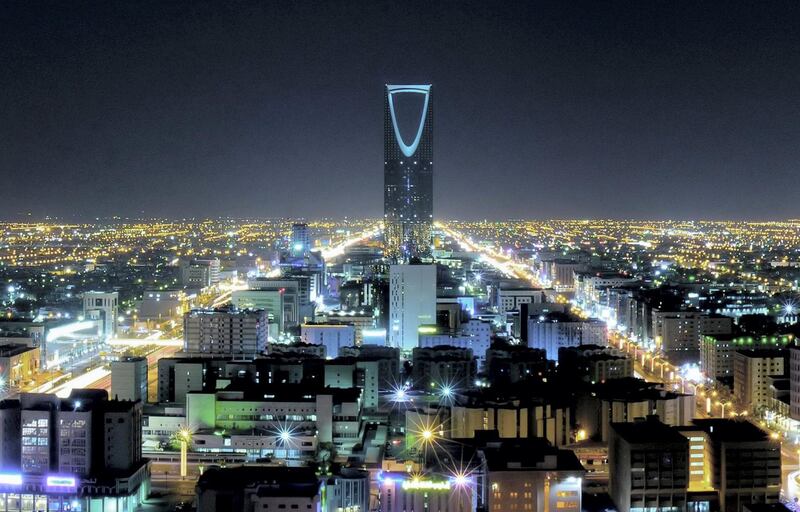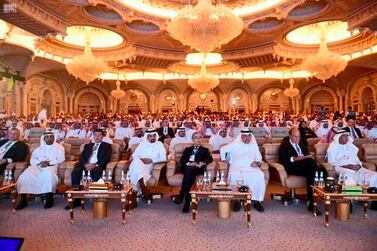Saudi Arabia narrowed its budget deficit by 86 per cent in the first half of this year as the biggest Arab economy continues to implement structural and financial reforms.
The kingdom, which reported a budget surplus in the first quarter of the year, swung to a deficit in the three months to the end of June, as both oil and non-oil income declined, the Finance Ministry said on Tuesday.
The budget gap during the first half of 2019 amounted to 5.68 billion Saudi riyals (Dh5.56bn), a drop from 41.7bn riyals recorded for the corresponding period in 2018.
Total revenue for the first six months climbed to 506.11bn riyals, a 15 per cent year-on-year rise. Oil revenue for the period also rose by 15 per cent to 344bn riyals, while non-oil revenue climbed by 14 per cent to 162.12bn riyals, according to the government data.
Tax revenues on goods and services increased by 48 per cent, boosted by an increase in VAT and expatriate fee collection. Trade and international transactions increased by 10 per cent during the period, the ministry said.
"The results of the first half of the year confirm the effectiveness of the financial and structural reforms implemented by the government, including diversification of government revenue sources through the implementation of initiatives aimed at increasing non-oil revenues,” Finance Minister Mohammed Al Jadaan said.
Development of public financial management processes to boost spending efficiency, which also includes the recently approved Procurement Law, helped the government in reducing the budget gap.
“The government is in the process of achieving a balance between the financial discipline and raising efficiency to realise the financial targets for this year by controlling the deficit rates in the budget and public debt,” the minister said.
Saudi Arabia, Opec's biggest oil exporter, still relies heavily on sale of hydrocarbons for revenue. It is undergoing an economic overhaul since the three-year oil price slump that dragged crude prices from a 2014 peak of $115 per barrel to below $30 per barrel in the first quarter of 2016. The price of oil has since rallied to breach $80 per barrel last year. Brent is currently hovering around the $65 per barrel range.
Despite the rise in oil income, the kingdom is pursuing its reform agenda under the Vision 2030 programme, which includes managing public finances, developing alternative lines of revenues through taxes, selling stakes in some of the state-owned entities and expanding the country’s non-oil industrial base.
Total expenses during the first half of this year also climbed to 511.8bn riyals, a 6 per cent rise from the corresponding period in 2018. Social benefits and employees' compensation, each increased by 3 per cent, while subsidies more than doubled following the implementation of the private sector stimulus plan.
Spending on health, social development and municipal services increased by 13 and 22 per cent, respectively. The government capital expenditure also climbed 22 per cent as it continued to implement housing projects and other development projects.
The budget gap during the second quarter of the year widened to 33.5bn riyals, from 7.36bn riyals in the same period of 2018. Oil revenue during the reporting period dropped by 5 per cent year-on-year to 174.91bn riyals, while non-oil revenue declined by 4 per cent to 85.8bn riyals, according to government data.
Spending rose by 5 per cent from the second quarter of last year, with a marked increase recorded in capital spending and outlays on subsidies and social benefits.








